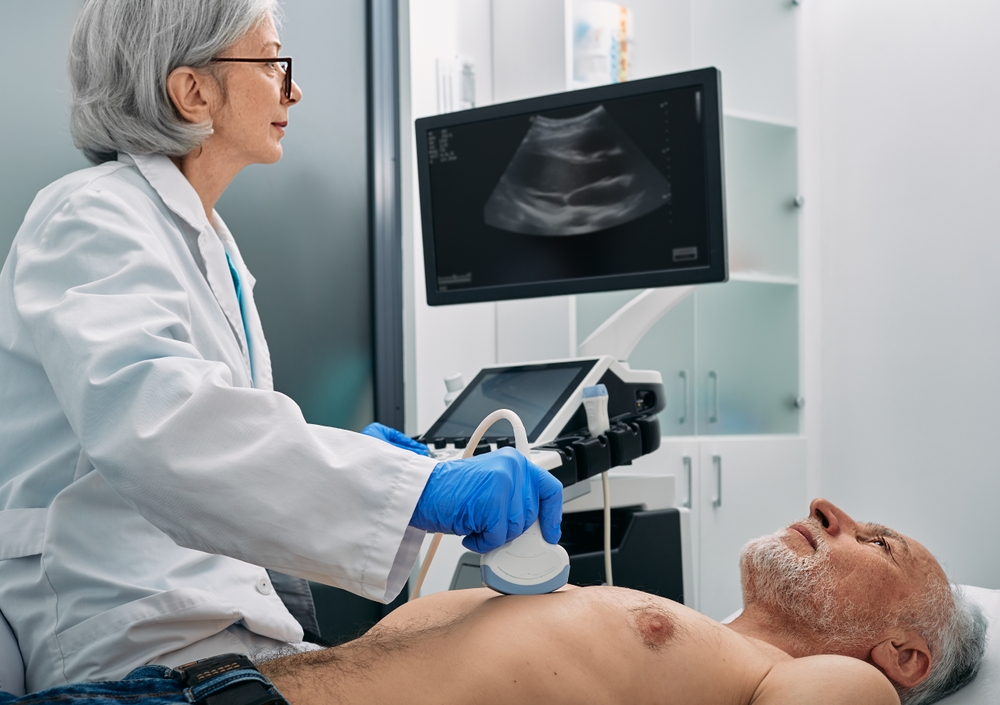Your Trusted Partner for Heart Health in Central Florida
At Pentus Health, we understand the critical role your heart plays in your overall health. Our experienced cardiologists are dedicated to providing comprehensive cardiovascular care, ensuring your heart receives the specialized attention it deserves.

Cardiology is a branch of medicine specializing in the diagnosis, treatment, and prevention of heart and blood vessel disorders. Cardiologists undergo extensive training after medical school, acquiring the specialized knowledge and expertise to:
This includes coronary artery disease, arrhythmias (irregular heartbeats), heart failure, and congenital heart defects.
Electrocardiograms (ECGs), echocardiograms (ultrasounds of the heart), stress tests, and cardiac catheterizations are some common methods used to assess heart health.
Utilizing medication, lifestyle modifications, and minimally invasive procedures (when necessary) to optimize your heart function.
While your primary care physician is your first point of contact for general health concerns, you might benefit from consulting a cardiologist if you experience any of the following:
This is often the case if you have a suspected heart condition.
Having a close relative with heart problems increases your risk.
This could indicate a serious underlying condition.
Left unmanaged, these can lead to heart complications.
Pre-eclampsia during pregnancy or previously diagnosed heart defects.
A major risk factor for heart disease.
May require further evaluation and treatment.
If chronic or accompanied by symptoms, it needs medical attention.
Our team of board-certified cardiologists offers several advantages:
Years of dedicated training and experience ensure you receive the most advanced care.
We listen to your concerns and tailor treatment plans to your unique needs and goals.
Our facilities are equipped with state-of-the-art diagnostic tools for accurate evaluation.
We work closely with other specialists within Pentus Health to provide comprehensive care.
Don’t wait to address any concerns you might have about your heart. Schedule an appointment with a Pentus Health cardiologist today. We offer convenient locations throughout Central Florida and are committed to helping you live a long and healthy life!

Echocardiography, also known as echo cardiology, is a painless imaging technique that utilizes ultrasound waves to create detailed pictures of your heart. Imagine a high-tech microphone pressing on your chest – it transmits sound waves that bounce off your heart structures like valves, chambers, and walls. These echoes are then translated into a moving image on a screen, allowing doctors to assess your heart’s size, shape, and function in real-time. Unlike X-rays, echo cardiology doesn’t involve radiation and is safe for people of all ages. This valuable tool helps diagnose heart conditions, monitor treatment effectiveness, and ensure your heart is pumping blood efficiently.
Interventional cardiology uses thin tubes threaded through blood vessels to diagnose and treat heart issues. Think of it as a kind of internal plumbing repair, done with minimal incisions. Cardiologists use these catheters to open blocked arteries, fix faulty valves, close heart wall defects, and even diagnose problems by visualizing the heart’s interior. This minimally invasive approach allows for faster recovery times and fewer complications compared to traditional open-heart surgery.
Cardiology is the branch of medicine specializing in the heart and its vascular system. It encompasses diagnosing and treating a wide range of heart conditions, from common issues like arrhythmias (irregular heartbeats) and high blood pressure to more complex problems like heart failure and congenital heart defects. Cardiologists utilize various tools, including echocardiography (ultrasound imaging), electrocardiograms (electrical activity recordings), and stress tests, to diagnose these conditions. Depending on the situation, they might recommend medications, lifestyle changes, or minimally invasive procedures performed by interventional cardiologists to address the problem. Overall, cardiology plays a vital role in maintaining and improving heart health.
Invasive cardiology uses thin tubes threaded through blood vessels to fix heart problems. Imagine tiny plumbing tools entering your heart through minimal incisions. Cardiologists use these catheters to open blocked arteries, repair valves, close defects, and even diagnose issues by looking inside your heart. This minimally invasive approach offers faster recovery and fewer complications compared to open-heart surgery
Copyright © 2025 Pentus Health. All Rights Reserved. Privacy & Compliance Policy Center | Terms of Use
